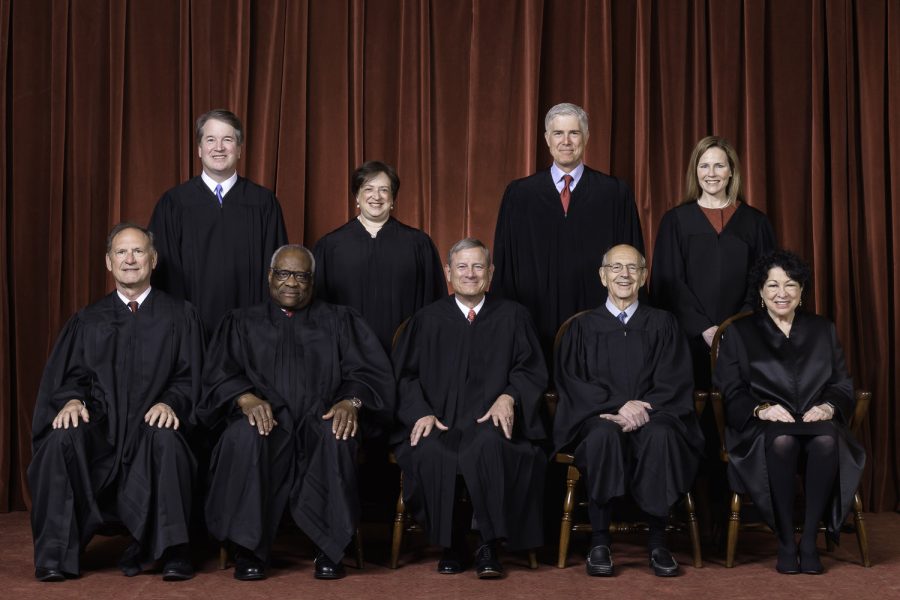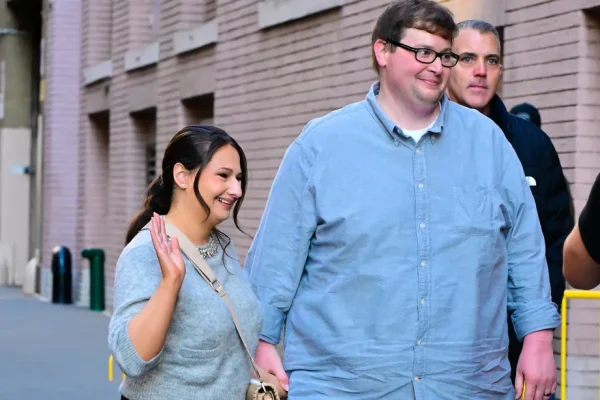Life Tenure for Supreme Court Justices Should Be Abolished
Currently, there are 9 supreme court judges (Ketanji Brown Jackson will replace Stephen Breyer). The average age of appointment for Supreme Court Justices is 53 years, with the average age of leaving the court at 81.
In the current era of U.S. politics, research suggests that partisanship is the main source of divide in American society. A result of this has been the pro-partisanship shift in the Supreme Court, with notable events responsible for this shift including previous president Donald Trump’s replacement of recently deceased justice Ruth Bader Ginsburg with Amy Coney Barrett. Public approval of the Supreme Court has decreased to 40% in September 2021 as a result of the partisan fights present within the court. Despite the fact that the Supreme Court should remain apolitical regardless of partisan fights in national politics, the appointments of newer justices has proven that such sentiment no longer exists, bringing into question whether or not the court represents and rules upon the collectives beliefs of American people, and if it’s sensible to have justices that are so controversial sit on the court until their death.
The brazen partisanship currently occurring in the Supreme Court confirmation process has proven that the Court will no longer maintain the apolitical stance it should have. For example, in 2016, then president Barack Obama’s Court nominee was met with refusal to hold a vote by Republicans because it was an election year. Four years later in 2020, another election year, the Republicans in the Senate chose to confirm President Trump’s nominee (Amy Coney Barrett) to fill the vacant seat left by Ruth Bader Ginsburg- despite it also being an election year. Establishing a system with term limits and regular appointments would help solve this problem of partisanship- each president would be responsible for the same number of nominations, rather than the current system where both parties fight to get their nominee in before an ideologically different president can nominate someone else.
Furthermore, mental decrepitude amongst aging justices has been studied- a periodical published by The University of Chicago Law Review has proven that the U.S. Supreme Court has had a history of mental decrepitude spanning from its establishment in 1789 to the current era. In 1833, “Honorable Judge Bladwin was seized…with a fit of derangement.”, and hospitalized for “incurable lunacy”, yet he returned to active service and stayed on the court for eleven more years until his death. This hasn’t changed in recent years as well- Justice Thurgood Marshall’s Lankford v. Idaho vote to affirm Lankford’s death sentence was the first time in his career that he had voted for a death sentence, in comparison to “at least 2,212 votes against death sentences over the previous nineteen years”, as he had previously consistently argued that the death penalty was a violation of the Eighth Amendment. Normal aging and age-associated diseases are correlated with a decline in cognitive function according to a 2015 study, and while this rate of decline can be decreased by healthy lifestyles, aging affects structural and functional changes in the brain regardless. Furthermore, modern medical improvements for physical health but not mental health has increased the life expectancy of humans, and justices are staying on the court longer than ever. While the retirement of Supreme Court Justices when they’re in good health would reduce this concern, recent cases have shown that such a thing will not occur when justices attempt to time their retirement with the nomination of an ideologically similar candidate- such as Ruth Bader Ginsburg’s wish to not be replaced by a nominee from then president Donald Trump. Justices are also serving longer terms than ever, with the average terms of the five most recently appointed justices lasting 27.5 years in comparison to the historic average of 16 years.
Another factor to consider is that the US Supreme Court having life tenure for its justices is an anomaly amongst other countries. Britain and Canada have retirement ages: for Britain and Canada judges/magistrates/coroners can serve until they’re 75, and it’s 70 years of age for Australia (Section 3, Judges Retirement Act 1937). Within America, 34 state courts in the US have a similar policy that ranges between 70-75 for retirement age (Vermont is the only outlier, with the retirement age being 90). There has also been previous and current legislation proposed to address this issue: in 1954, Senate approved an amendment to force federal judges to retire at 75, but it was never put into action due to the Brown v. Board of Education case, which was arguably much more important, occurring at the same time and receiving public attention. There’s a current bill in support of ending life tenure as well, H.R. 8424 proposed by representative Ro Khanna (D-CA-17), which calls for 18 year term limits where retired Supreme Court justices can still serve as senior justices after they leave the court.
A common defense for life tenure is that it would be ageist to force judges to retire at a certain age. There was a case where this claim was sustained as well, where Suffolk County judges sued the state for ageism over a mandatory retirement age put in place, and won. It’s also understandable to believe that if there was a retirement age restriction put in place, presidents would simply bypass it by nominating younger judges with less experience to the Supreme Court in order to further their legacy (though this trend has already begun occurring with recent appointees), which would mean nominees are less experienced. The average age of appointment for Supreme Court justices is 53, a reasonable age considering the position should require extensive education and experience. However, having a term limit such as the 18 years proposed by H.R. 8424 would limit this. Allowing justices to move from the Supreme Court to lower courts after their term expires would also allow them to work until they want to retire, or reach the age set by their state courts.
In general, a restriction should be placed on Supreme Court justices. The passing of judges in such turbulent years where presidents are being elected, such as what occurred with the recent passing of Ruth Bader Ginsburg and Anthony Scalia has proven the need for this in order to avoid nominee manipulation by either party. Having a term limit and putting restrictions on the appointments presidents make would change the nomination process and make it much more rational, and America would have a Supreme Court that evolves with its society.












